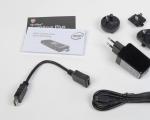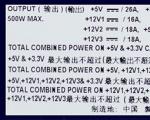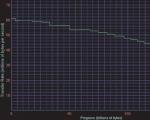Music score music editor. Note editor. MuseScore is an excellent music editor
Music writing software like any other software, should be well written, functional and practical, and provide users with a convenient and understandable user interface. The narrow specialization of the task and the complexity of composing musical notes is often reflected in the price tag of commercial products. However, do not worry, on the Internet there are enough free programs capable of fulfilling your needs.
The main task of this class of programs is the creation of compositions from notes and their subsequent provision in a printed version. Of course, composing music by hand, with pen and paper, can be more fun and carry a subtle flavor of creativity that software can never replace.
However, you may face more mundane tasks that are much easier to solve with the help of automation tools. For example, duplication of repeating parts of compositions, inserting notes in the right places, dragging notes from one part to another, which, when manually compiled, can be solved up to compiling a composition or a separate page of a musical notation from scratch.
Nevertheless, this class of programs is just one of those options where you should not chase automation, sacrificing freedom of action. First of all, notation programs should not interfere with your composition. The main purpose of such an application should be to support and provide additional tools for quick operations.
Therefore, if you install a program and find that your options are limited in some way or you are required to change the way you are used to writing, then it is better to find another program, even if it has fewer tools.
Remember, any writing of a composition is first of all a creative process. Just imagine you are composing a composition. In front of you is a pen and note paper. How appropriate do you think the removal of "extra" notes or multiple duplication due to the fact that the program cannot transfer the volta bracket to the next line or page?
There are many free music notation programs. Some may seem better, some worse. A matter of taste. However, when choosing, you need to take into account that each of these programs has its own individual interface, and it may take you at least half an hour to analyze the features and functions of which.
Note: Basically, the time for parsing is more due not so much to the complexity of the programs, but to different approaches to the organization of the menu, the location of buttons and other controls.
IN this review well-known and powerful cross-platform programs for writing music are presented.
Overview of Free Music Writing Software
MuseScore is an excellent music editor
Lilypond
| An excellent text-based program. Beautiful musical notation at the output. It has various third-party graphical shells for ease of compilation. | ||
| Creating music notation based on a special text language can cause some difficulties |
A free notation editor that allows you to create scores of any complexity. The resulting score can be saved in one of the popular formats or even as an audio file due to the presence of a built-in synthesizer using SF2 technology.
Attention! The description below is for previous version 1.3.3, which may differ slightly from the current one.
The computer is a universal thing! It can be used for work, and for entertainment, and even for creativity. We were convinced of this more than once, considering various programs on the pages of our site.
Our article today is another “hello” to musicians :). And, this time, it is professional, because the application that we will consider allows you to create musical scores of any complexity on your PC!
But not only will you be able to create and print typographic-quality sheet music, but in addition, you will also get a fairly powerful synthesizer that will allow you to hear the composition you have just notated and even save the recording in one of the popular sound formats! So, we will talk about cross-platform free visual editor score - MuseScore.
Comparison with a paid analogue
MuseScore has a user-friendly interface and rich functionality that can be compared with the capabilities of famous paid notation editors, such as, for example, Finale 2012:
A small disadvantage is the ability to work only with SF2 instruments (support for VST and VSTi would not hurt), since it is not possible to find high-quality “soundfonts” for all instruments. And the built-in library of sounds, although it sounds better than a simple MIDI, is still far from ideal.
However, not everything is so bad :). MuseScore is small (compared to giants such as Sibelius or Finale), but at the same time it allows you to add almost all conceivable signs and marks to the scores. And support for exporting and importing the MusicXML format makes it easy to open and edit notes created in any popular editor!
The last thing I would like to note is the most simple and convenient interface. There is nothing superfluous in MuseScore, and all the control tools for the created composition are located as well as possible, which allows you to add the necessary notation elements in just two clicks!
Installation and first acquaintance with the program
Installing MuseScore is very easy. You just need to download the archive with the program and run the installer. In the installation wizard window that opens, we agree with all the points and click "Next" until the program is installed. Upon completion of the installation, the working window of the program will load:
![]()
Here is the simple interface I promised :). The main part of the window is occupied by a stave with notes familiar to all musicians, the rest of the workspace elements are grouped around it.
On the right is the MuseScore Connect frame, which gives us access to the program's community, in which there is some musical material. Basically, to work this section is practically useless, so you can close it by clicking the cross in the upper right corner.
Below the music sheet is a preview panel. It shows thumbnails of our entire project, with the help of which we can quickly jump to the desired position in our score.
On the left is a panel with drop-down lists with a variety of additional musical signs and symbols. All of them are grouped by type, which allows you to quickly find the right one.
At the top there are two toolbars (one for entering notes, and the second with the usual project management buttons and a mini-playback panel) and a menu bar. That's all:). Consider the methods of working with the program in practice, creating the melody of the popular Soviet song "The Last Train".
Creating a new score in MuseScore
To get started new project we just need to click the “Create a new score” button or select the appropriate item in the “File” menu:

In the window that opens, we can enter information about the title of the composition, its authors, etc. In principle, you can skip this step, and enter all the data into the finished score using the "Text" section in the "Insert" menu. After filling in all the fields, click the "Forward" button and proceed to the next preparatory stage:

At this stage, we will need to decide on a set of tools that will be involved in the composition. By default, the names of all tools are given on English language, but if you wish, you can change them to Russian in the program settings (menu "Edit" - "Options" - line "List of tools").
To begin with, I advise you to leave only the piano (or any other solo instrument) in the list, and add the rest of the instruments after creating the main melody. The next step is to choose the tone of the piece:

If you have sheet music of the original work, then indicate the key that is in the existing score. If you want to write a melody from scratch, then it's easier to choose the key "C major / A minor", and then, if necessary, transpose it to the desired key (menu "Notes" - "Transpose").
Last preparatory stage- work with beats:

Here we need to specify the size of our composition, set up the lead-in (if there is one) and set the number of measures in the score. Naturally, all these parameters can be changed in the future, but it's easier to specify everything at once;). At the end of the configuration, you can press the "Finish" button - our project is ready to go :).
Working with Palettes
Since we decided to create the melody of "The Last Train", it would be nice to start by finding its notes (although you can pick it up by ear, but it's more convenient :)). Open a PDF file with notes and try to play them one-on-one in the MuseScore environment:

How to work with notes and pauses, we will understand in the next section, and now I want to show you an example of working with "Palettes".
As you can see, we already have the signs at the key and the time signature, but there are no indications about the dynamics of the game. In the original score, the designation "mezzo-forte" is also used. We need to put the same icon at the very beginning of our music sheet. To do this, go to the "Palettes" look for the "Dynamics" section, open it and drag the desired icon to the stave with the left mouse button. Ready:).
In the same simple way, almost any musical signs and symbols other than notes can be added to MuseScore.
Entering notes in MuseScore
Notes in MuseScore can be entered in two ways: with the mouse and using a MIDI keyboard. You can also use the "hot" keys of a regular keyboard, but this is not very convenient, so we will not consider this option. Based on the fact that we don’t have a synthesizer as a device, let’s try to work with the mouse:

By default, MuseScore works in edit mode. In order to be able to add the notes we need with the mouse, we need to activate the “Note input mode”. This can be done with the corresponding button on the note input panel (in the form of the letter “N”) or by pressing the “N” key on the computer keyboard.
After the mode is activated, we can enter notes and pauses of the desired duration by clicking with the mouse in the desired place of the stave. At the same time, we set the duration of the input notes and pauses by activating the button with the image of the desired duration on the note input panel.
Also, in addition to buttons with duration and pause, on the panel you can find buttons for applying the most commonly used accidentals, a key for changing the direction of stems of notes, and buttons for switching between voices (if the score provides them).
MuseScore automatically groups the notes we entered according to the rules of musical notation, but such a grouping is not always convenient. Fortunately, any action of the program can be corrected manually. Let's give a specific example with our "Electric Train". We entered the notes correctly in the first four bars, but they are grouped differently than in the original score:

In order to combine notes into one group, it is enough to find the “Group Properties” tab in the “Palettes” and drag the “Group Middle” symbol to the note following the one that should be included in the group.
In order to split a large group into several smaller ones, we need to drag the Group Start icon to the note where the split should start. Accordingly, if we need to exclude only one note, then we will apply the “Without group” property to it.
In the previous screenshot, you can also notice a few more interesting points. In the original score, there are accent marks above the chords in the second measure. Adding an accent is not a problem: look for it in the "Articulation and Ornamentation" section and drag it to any note of the chord.
But in our case, the emphasis is under the rulers of the stave, and not above them. We can fix the situation in two ways. First, you need to try to turn the stems of the chord down using the appropriate button ("Flip Direction") on the note input panel. In theory, this should help in most cases. If it doesn't help, then another option: turn off the note input mode and simply drag any sign to the right place!
With the latter method, you can control the position of any elements, such as leagues, volts, crescendo/diminuendo lines, etc.
Insert text notes
We figured out how to work with notes and insert various musical signs into them. However, sometimes in practice, musicians have to make various textual notes in the notes. With MuseScore, you don't have to do them by hand - there is a special section for this in the "Insert" menu:

In the "Text" section, all items are placed in three groups.
- The first group contains text fields to enter the name of the composition, its authors, etc., in a word, all those fields that we filled in at the very beginning of creating a new project.
- The second group contains items that allow you to make all sorts of notes over the necessary notes regarding the nuances of their performance. There is also a function of the letter signature of the chord.
- The third group contains a wide variety of text inserts that allow you to enter everything from vocal text to tempo symbols on different languages(no Russian).
To enter text, we must first select the note to which this text will be attached. Moreover, a feature, for example, of vocal text (and some others) is that after pressing a space or a hyphen, the next syllable is automatically linked to the next note, which is very convenient and allows you to quickly write vocal parts or long explanations using the Staff Text tool.
Copying and pasting pieces of music in MuseScore
What I would like to mention separately is the copy and paste function in MuseScore. The fact is that the use of these features is somewhat hampered by the fact that the program does not have a selection frame that is familiar to many. However, this does not mean that you cannot highlight anything.
Highlighting in MuseScore works like this:
- Click the first note of the fragment to be copied;
- Hold down the SHIFT button and click the last note. Moreover, if you also want to select the bass part, then you need to mark the end of the fragment exactly on the last note in the bass clef (otherwise, only the notes of the violin range will be selected);
- Press the key combination CTRL + C or "Edit" - "Copy" to copy the selected fragment to the clipboard.
With such simple manipulations, you can quickly copy repeated fragments of the part, as, for example, in bars 1 - 2 and 5 - 6 in the screenshot below:

Adding new instruments and working with a drum part
As you can see from the previous screenshot, our work on entering the piano part has come to an end. However, with MuseScore we can also create an arrangement for our main melody. To do this, we need additional musical instruments.
We can add them by calling the "Tools" item in the "Insert" menu:

We will see a list of tools already familiar to us, which you, I hope, have already Russified. If you have not done this, you can do it from this window without even resorting to the "Settings" of the program. Just click the "Upload" button, select the "instruments_ru.xml" file from the list and click "Open".
In the list of instruments, open the "Non-tonal percussion" section and select the "Five-line drum kit" item. At your disposal will be a standard drum set, which is used today in popular music of various genres. Why did we choose drums? Because working with them is different from working with familiar instruments that play from notes.

In the "stave" for percussion, each ruler is responsible for a specific drum or cymbal, which are part of the installation. We can add the one we need from the Drums palette by dragging and dropping, which is already familiar to us. At the same time, we, as before, indicate the duration of the sound using the buttons on the note input panel. That's the whole difference :).
After making a loop of four to eight bars, you can then copy it and fill the rest of the bars with rhythm!
Additional MuseScore windows
We have dealt with all the main features of the MuseScore music editor and it remains only to clarify some of the nuances. These nuances include additional windows that can be activated in the View menu:

These windows include the Playback Panel, Mixer, and Synthesizer.
The “Playback panel” contains in its arsenal a track playback progress slider, the already familiar buttons “Rewind to the beginning” and “Play / Stop”, as well as the “Level” slider, which allows you to adjust the overall volume of the composition and “TMP”, which is responsible for the tempo of the melody .
Among other things, in the lower left corner of the window there is a drop-down list that allows you to select the style of play of virtual "performers". The default value is "Straight", which corresponds to the standard playing of notes, but shuffle and swing rhythms are also available.
The "Mixer", like its real counterpart, is designed to adjust the volume level, panorama and some effects (in our case, reverb and chorus) for each of the instruments separately. Moreover, the part of any instrument can be switched in real time to “perform” by any other instrument by selecting it in the “Sound” drop-down list.
At the same time, for a set of percussion instruments, we can choose the type of drum kit, starting from the standard one and ending with such exotic ones as, for example, the drum machine TR 808!
The "synthesizer", which is the popular free FluidSynth, gives us the ability to adjust the brightness of the effects, and, most interestingly, change the sound sets of virtual instruments created on the basis of SF2 technology!
You can find many pretty good sound banks on the Internet, of which I could recommend RealFont and Shan "s Soundfont. To unpack them into the usual SF2 format, you will need the sfArk SoundFont Compression program.
The above soundfonts are full-length complexes musical instruments, however, there are also highly specialized ones, for example, electric guitars or sets of folk instruments - look for it and find it :).
Advantages and disadvantages of the program
- user-friendly interface;
- support for all musical notes;
- support for SF2 sound banks;
- support for text input;
- saving the score to a ready sound file.
- no support for VST plugins;
- The function of optical recognition of notes would not interfere.
conclusions
If you are a musician who is "friends" with notes, then you should definitely try out the possibilities that MuseScore provides. You will get double benefit: firstly, a tool for creating high-quality scores, and secondly, a software synthesizer that will allow you to realize almost any of your musical fantasies!
In addition, the scores created by you in MuseScore can be distributed in one of the most popular MusicXML formats, which is supported by all popular notation editors, which means that you will be opened the way to the world of modern composers who use a computer to write music!
P.S. It is allowed to freely copy and quote this article, provided that an open active link to the source is indicated and the authorship of Ruslan Tertyshny is preserved.
MuseScore is an application for editing music scores with a simple and clear interface. The program supports input from external MIDI keyboards, available on most popular operating systems, is completely free and translated into Russian. It allows you to add notes in a couple of mouse clicks, makes it possible to work comfortably with instrumental parts and contains a special inspector for setting up each element of the score.
MuseScore also boasts an extensive library with templates, an equally extensive database of instruments, the ability to enter notes in WYSIWYG mode, work with an unlimited number of note lines, a built-in sequencer and FluidSynth synthesizer, and export ready-made scores to most common graphic formats, as well as the ability to assign specific actions to keys and keyboard shortcuts. Thanks to the support of these "hot" keys, MuseScore greatly reduces the amount of time required to create new projects. Included with the program you will find detailed technical documentation in Russian. It will be especially useful for those who have not previously had to work with applications of this kind.
Key features and functions
- can work with connected MIDI keyboards;
- allows you to export working projects and finished scores;
- supports note input in WYSIWYG mode;
- can work with an unlimited number of musical lines;
- has a nice graphical shell with customizable toolbars.




